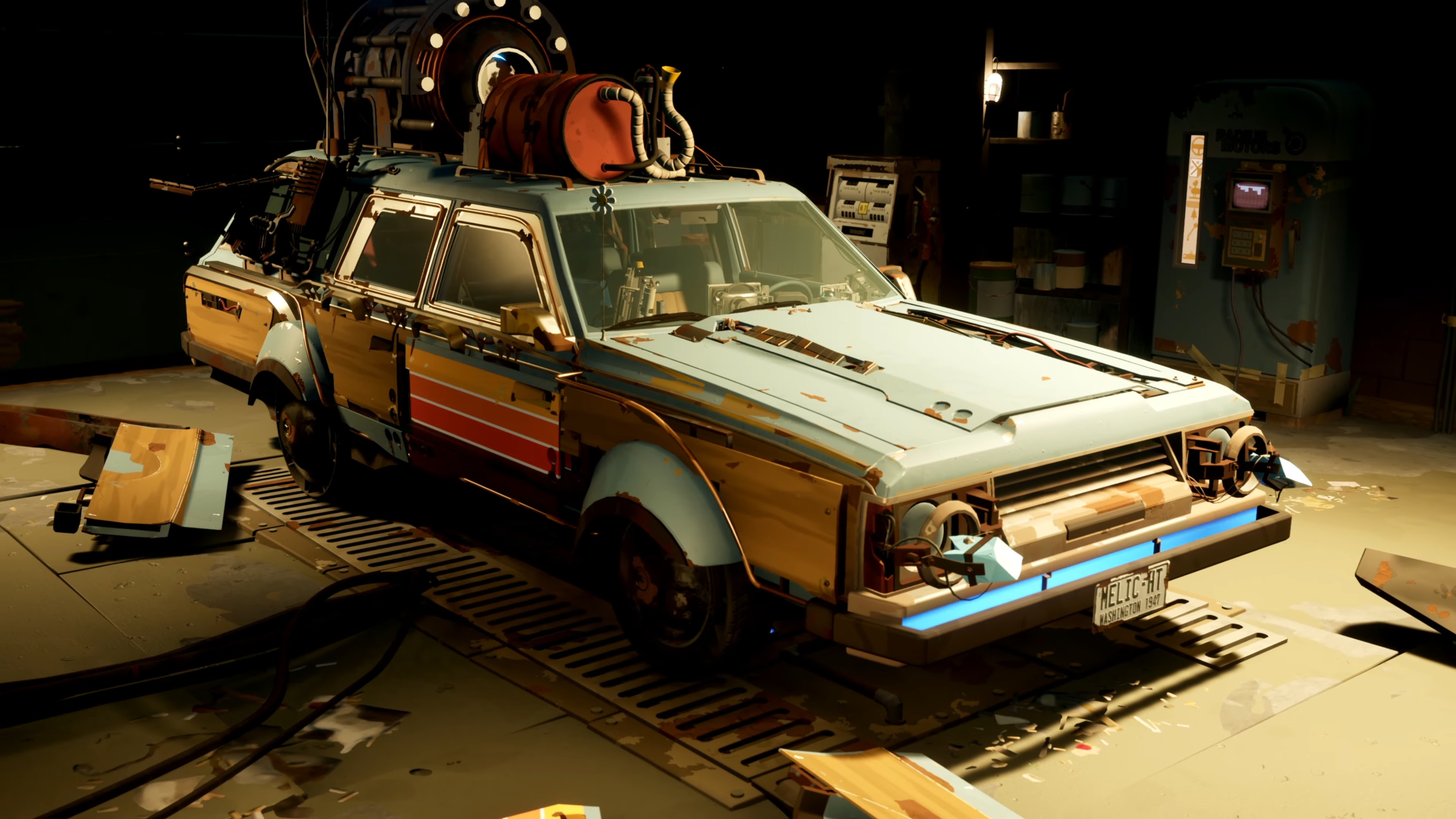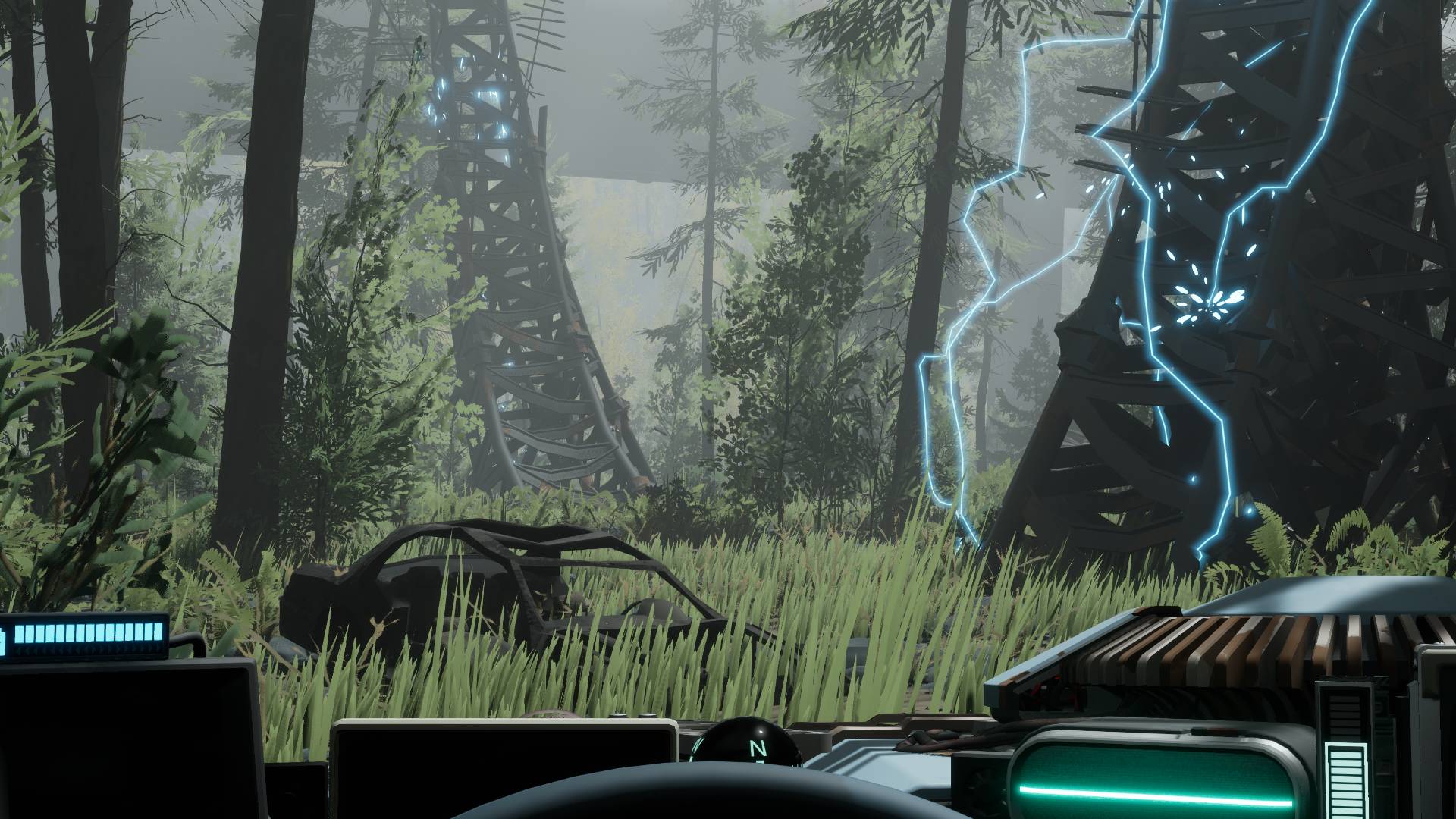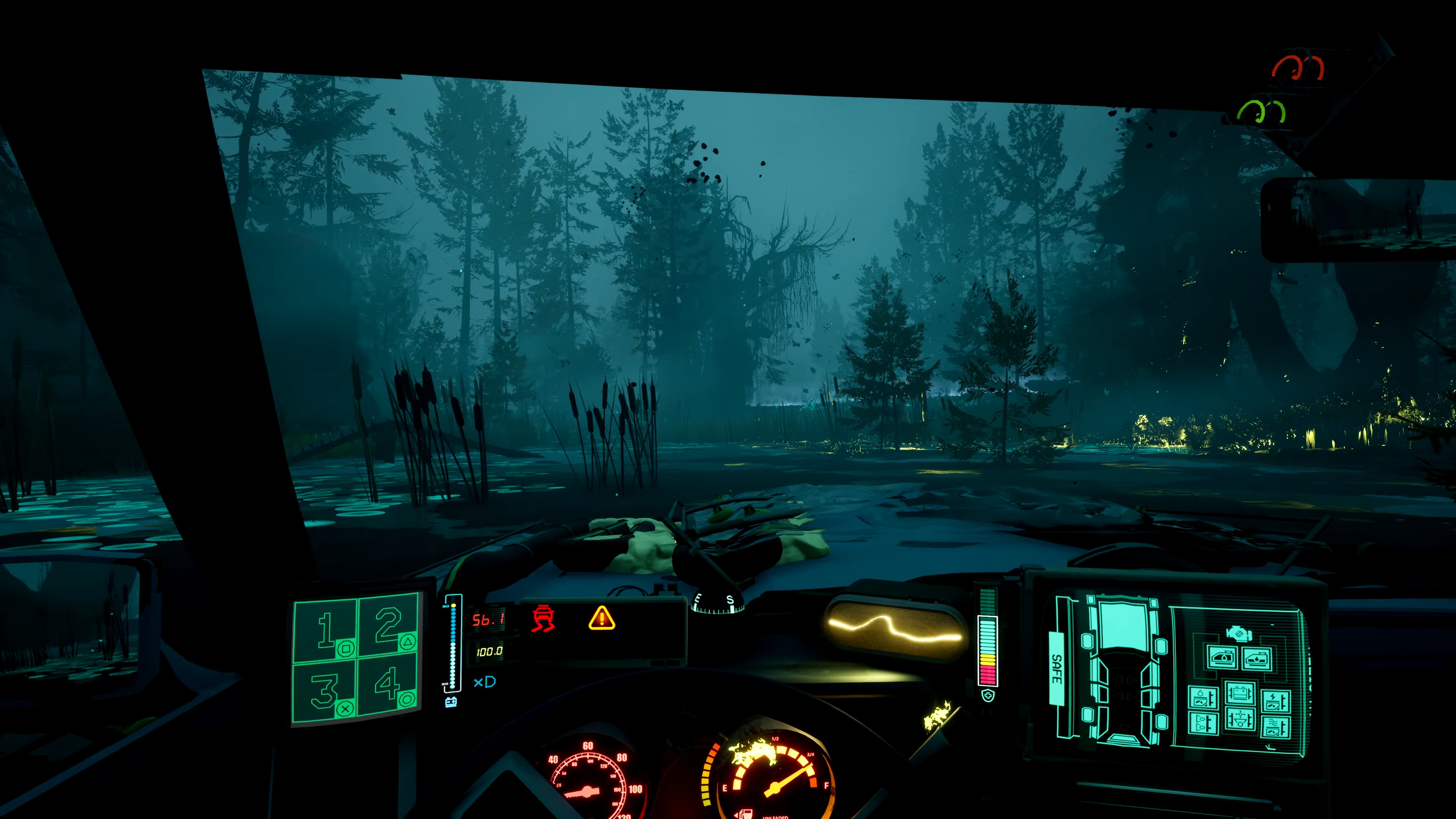How Pacific Drive developer Ironwood merged cars, music and mystery to make a motoring roguelike
Interview | The team behind Pacific Drive explain all about anomalies, motors and mechanics

A few moments into talking Pacific Drive, with creative director Alexander Dracott and lead foreground artist Jacob Stone, it's all derailed as the two try to count up all the working car parts you can upgrade to survive the game's otherworldly storms. "I was trying to tally up in my head the number of like swappable upgradable parts on the car and I think it's 29 different points," muses Stone. "Areas you can swap parts out or upgrade them, not including cosmetics".
This seems to surprise Dracott who starts counting, "Four wheels, five panels, five doors, engine, two headlights, racks…six racks. It's a lot, yeah".
Motor on

Check out the Pacific Drive demo in Steam Nextfest now and see if you can survive the exclusion zone.
It's a cute story, watching the developers finger-count their way through a game they've been working on for years, but it also highlights just how much the car is the star of Pacific Drive. Obviously it's a game about driving, albeit through a supernatural storm, but the car isn't just a means to an end here, it's a character in its own right and the expression of the game's RPG rougelite progression. You're just the meat in the seat, it's the hero vehicle and how you build it out that really brings the game alive, as you take increasingly risky runs into a forest full of lightning, machines and anomalies, to scavenge the supplies you need to make even more risky runs…

"The car was definitely central to the idea from the very beginning," says Dracott. But the game's structure as it stands now, grew organically over time. "It was originally 'car and driving' means some kind of narrative and emotional thing", he explains. But as the survival mechanics started to develop, so did the role of your ride. "We wanted to connect you with the car and so being able to gas it up and take care of the tires and stuff like that was a good inversion of the survival mechanic plate spinning which is usually on the player."
As I said in my Pacific Drive hands on, the game absolutely nails the feeling and atmosphere of driving. Not in the usual sporty way of engine tuning and racing lines, but in a more personal 'zoning out while listening to the radio' kind of way. Many things play into that, from all the knobs and levers you can pull to turn on wipers and lights, to the music, and just touching all the bits around you. All of which was a big part of development. "The interactivity with the car was something that Jacob and I, and Seth [Rosen] our game director all worked on together quite a bit," highlights Dracott. "There are a lot of simulation games where you can roll down every window and fiddle with every knob but we really wanted to make sure that the fantasy took precedence over realism; the fantasy of being this weird, mechanic stuck out in the zone, surviving along the way and working on their car." Stone continues, "There's so much massaging that ends up having to happen especially with all the gadgets along the dashboard, and trying to make sure all the different pieces have their own space. [It's] definitely been one of the biggest things."

Music, similarly, drives the character of the game, with a range of bands and songs on the radio. While there's a range of genres and styles there is a definite flavor to it all that helps craft the atmosphere of your dimly lit drives into the unknown. "As the creative director, that was something I ran point on," admits Dracott. "A lot of listening to music, hundreds of songs. You want a soundtrack that matches your time at the garage, but also weird moments out in the zone. The bulk of that tracklist is from the Pacific Northwest, the greater Pacific Northwest area, it's around 80% of that." Wherever the bands and artists are from, it's a mix that works to immeasurably improve the vibe. When the rain is coming down and you flip on the wipers and lights just as that song comes on the radio - slightly thin and tinny in the car's acoustics - the whole thing just lifts up a notch.
No right turn
While the car, the music, and your relationship with it all is one of the key parts of the game, it's driven by your experiences within the Olympic Exclusion Zone. If the car is the star then this strange shut away area is the support. It's full of strange phenomena, anomalies and machines, locked away after a mysterious experiment went wrong. There are big STALKER and Annihilation vibes to its mystery and threat. "It is deadly, and it is dangerous, but it is not evil [or] malevolent," Dracott clarifies. Nothing you find as you explore is explicitly out to get you, the risk largely comes from you putting yourself in danger as you follow the plot or look for juicy salvage to build out your car. "It's a lot of what you find just out in the world", Dracott continues, "you go off to a jungle by yourself, not prepared? That jungle is not evil, but it's certainly going to be deadly if you don't know the risks."
Weekly digests, tales from the communities you love, and more
"From a gameplay perspective [the zone is] 'poke it with a stick'", Dracott explains, "and the stick ends up being the car that you've made". The ability to build it out however you want further makes it 'yours' as you play. But it's not just a case of just making it incrementally better over time, because there are different parts for different needs. "The offroading tires as an example, it's not inherently a +1 to your car," Stone points out. "It's more a give and take where it's going to make sure you can do those off roading experiences more [easily] but it also means you're not going to be as good on the road. (Although, from my experiences so far of careening through the trees to avoid danger, off road tyres are a must.)

"It's about being able to adjust how you're able to control your car," Stone continues. "There's certain sets that are specifically designed to help you deal with different biomes. The swamp is one of them, there's a full set of parts you can get for your car that will help you deal with it. You can choose to either put a couple pieces on your car to make those specific parts a little bit more resistant to the swamp, or you can choose to deck your whole car out."
From the few hours I've played so far, the gameplay marries all this open freedom to explore and more scripted story parts well. The narrative direction is driven by a cast of characters you meet who are trying to help you survive, while other significant moments are self-generated as you smash through trees praising or regretting your choice of tires, while deciding where to go or what buildings to pull over and check. The unpredictability of the Exclusion Zone means you can never entirely tell how a run is going to play out.
While it's been easy to point at all the specific bits that go in to make up Pacific Drive, it's how all these individual things come together to make the whole. "It's not just any one part," concludes Dracott. "It's iteration and the skills and talent of a lot of folks. It can be great moody lighting [but] it's also how afraid is the player? What is the soundtrack on the radio? How terrifying do the anomalies look or sound? Even the little things like how far should the music from the car be heard when you're walking away in the middle of the woods? Pay attention to all those details and clearly the results speak for themselves."

I'm GamesRadar's Managing Editor for guides, which means I run GamesRadar's guides and tips content. I also write reviews, previews and features, largely about horror, action adventure, FPS and open world games. I previously worked on Kotaku, and the Official PlayStation Magazine and website.


